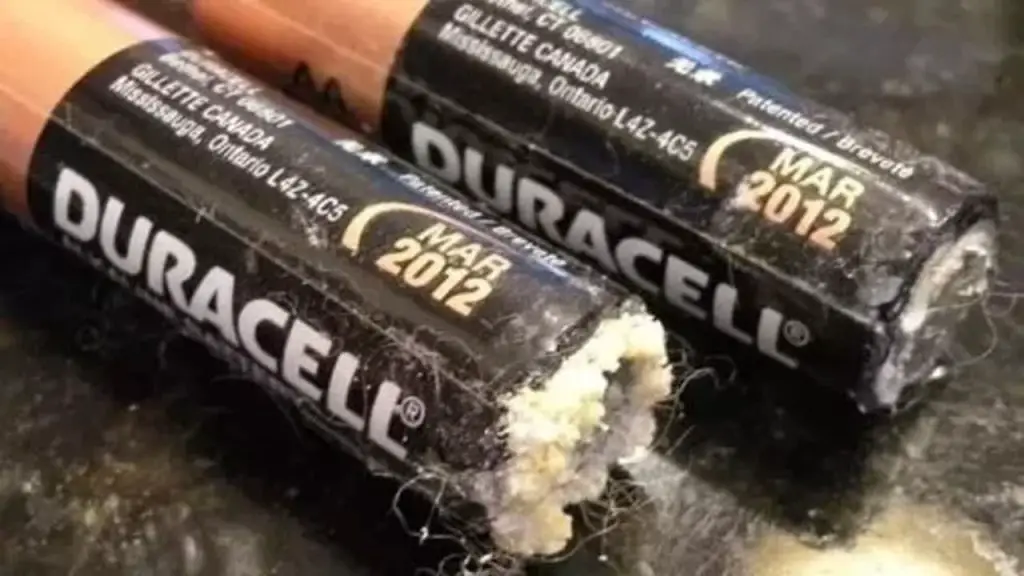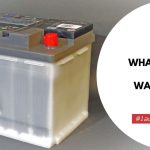Battery acid can cause serious health problems if it comes into contact with human skin. But what exactly happens when you touch battery acid?
Battery acid, often called sulfuric acid, is a colorless and odorless chemical found in most lead-acid batteries. It’s a corrosive substance that can cause severe tissue damage if it comes into contact with your body, making it incredibly dangerous to deal with without extreme caution.
Touching battery acid can have an array of dire consequences for the individual involved. In this article, we’ll address what happens if you touch battery acid and recommend several measures to keep yourself safe from potential harm.
What is Battery Acid?
Battery acid, also known as sulfuric acid, is a colorless and odorless electrolyte found in lead-acid batteries. It is a highly corrosive substance that can cause severe tissue damage if it comes into contact with your body.
As such, it must be handled with extreme caution. In a battery, sulfuric acid reacts with the lead plates stored inside to create an electrical charge.
What Happens If You Touch Battery Acid?
Touching battery acid can have dire consequences for the individual involved. Depending on the severity of the contact, serious health problems may occur, including skin burns and blistering, eye and throat irritation, difficulty breathing or swallowing, nausea or vomiting, and even death in extreme cases.
It is important to note that these effects may not occur immediately, and can take several minutes or even hours to manifest.
If you come into contact with battery acid, it is imperative that you seek medical attention as soon as possible. Additionally, if the acid has gotten into your eyes, flush them out with plenty of water and wear protective eyewear to prevent any further irritation.

Types of Batteries and Their Acids
The type of battery acid used in a lead-acid battery will depend on the specific battery model. Generally, there are two types of lead-acid batteries: flooded and sealed.
Flooded batteries use sulfuric acid as their primary electrolyte. This acidic solution is housed inside a removable reservoir, allowing users to add or remove electrolytes from the battery as needed.
Sealed batteries use a gel-based electrolyte and are not able to be opened or modified. They typically contain sulfuric acid, but may also contain phosphoric acid in some cases.
How to Prevent Contact with Battery Acid?
Here are the tips to prevent contact with battery acid!
Household Safety Tips for Storing Batteries Safely
Store batteries away from direct sunlight and other sources of heat. Keep them in a cool, dry place, such as a cupboard or closet.
Always store batteries in their original packaging to protect them from contact with metal objects that could cause a short circuit. Do not store batteries near combustible materials like paper, wood, or gasoline.
Be aware of potential dangers when handling battery acid. Wear protective gloves, safety glasses, and other protective clothing. Do not mix battery acid with any other type of chemical or liquid. Dispose of old batteries according to local recycling regulations.
Protective Gear for Handling Batteries, Such as Gloves and Goggles
When handling batteries or battery acid, it is important to always wear the proper protective gear to ensure your safety. This includes gloves and goggles to protect your hands and eyes from coming into contact with corrosive substances.
It is also recommended that you wear a face mask and a laboratory coat or apron to protect your skin and clothing.
In addition, be sure to keep any electrical equipment used in the battery handling process away from any open flames, sparks, or other sources of ignition. Battery acid is highly flammable, so it is important to take proper precautions when handling it.
Cleaning Up a Spill or Leakage from a Battery.
Once the battery acid has been contained, use a vacuum cleaner to clean up any remaining residue. Make sure to dispose of any contaminated materials in an appropriate manner according to local regulations.
Never pour battery acid down a sink or drain as this could create environmental hazards.
Steps to Take When Cleaning Up the Spill or Leakage
When cleaning up a spill or leakage from a battery, it is important to take proper safety precautions. First and foremost, wear appropriate protective clothing such as gloves and goggles. It is also wise to keep the area well-ventilated by opening windows or using fans if possible.
The next step is to neutralize the acid by pouring a solution of baking soda and water over the affected area. Be sure to cover the entire spill, as this will help neutralize the acid more quickly and effectively.
Once the baking soda has been applied, carefully wipe away any remaining residue with a damp cloth. Finally, dispose of any hazardous material in accordance with local regulations.
Conclusion
In conclusion, it is important to take the proper safety precautions when handling battery acid or its related materials. Protective garments such as gloves, goggles, and a laboratory coat or apron should always be worn.
It is also important to store batteries in their original packaging away from sources of heat and combustible materials.



